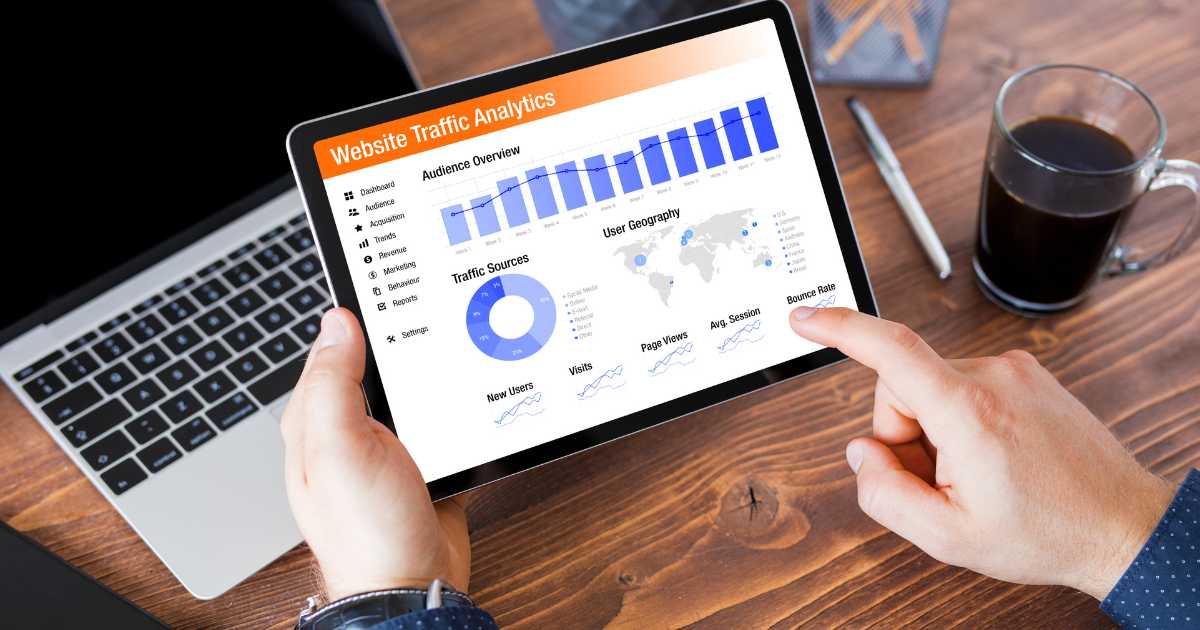It’s a digital era, and almost 46% of all Google searches are seeking local information. If your business isn’t showing up on Google Maps, you’re missing out on a colossal traffic and conversion potential.
Picture this: A potential customer is searching for services or products you offer, right in your locality. Instead of your business, they find your competitor on Google Maps. Not only do you lose a sale, but your competitor grows stronger in local search rankings. The power of local SEO is undeniable, and Google Maps rankings are at its epicenter. Yet, so many businesses remain invisible.
But here’s the good news.
Ranking on Google Maps isn’t rocket science. With a blend of accurate business information, quality engagement, and localized SEO efforts, you can make sure your business stands out. I’m Neil Patel, and I’ve demystified SEO for countless businesses worldwide. Now, let’s dive deep into how you can optimize your presence and rank higher on Google Maps, ensuring that your local customers find you, every time.
With this strategic approach, you’ll be ready to leverage the full potential of Google Maps and drive local traffic like never before.
Understanding Google Maps Ranking Factors
————————————————————————————————————————————-
1. Proximity
It all begins with proximity. Imagine you’re craving a slice of pizza in New York. You’re not going to get recommendations for a pizzeria in LA. Around 76% of people who conduct a local search on their smartphone visit a business within a day.
The closer you are to the searcher, the higher you’ll rank. But don’t get fooled into thinking this is the only factor. Just because you’re closer doesn’t mean you’ll always come out on top.
2. Relevance
This brings us to relevance. Let’s say you run a bakery. If someone nearby searches for “fresh croissants,” your bakery should pop up. But if they search for “organic dog food” and you don’t sell that, Google won’t show your business.
It’s simple: The more your business aligns with the searcher’s intent, the better you rank. Regularly updating your Google My Business listing ensures Google has the latest info about what you provide.
3. Prominence
Now, onto prominence. It’s not just about being well-known offline. Online signals matter. Consider a local bookstore that everyone in town loves. It has history. Yet, if it lacks online reviews or isn’t mentioned in local online directories, its prominence score might suffer.
I’ve seen businesses with fewer physical customers outshine bigger offline competitors simply because they’ve built a solid online reputation. So, encourage those online reviews, get mentioned in local blogs, and make sure you’re actively building your digital footprint.
Navigating Google Maps rankings isn’t just about understanding the algorithm, but mastering how each factor relates to the user’s experience. And as always, it’s about blending the art and science of SEO.
Setting Up & Optimizing Your Google My Business (GMB) Listing
————————————————————————————————————————————–
· Claiming Your Business Listing:
First and foremost, stake your claim. Before you can show up on Google Maps, you need to tell Google you exist. I’ve encountered countless businesses that overlook this primary step. It’s like building a shop but never opening it. Start by claiming your Google My Business listing. It’s free, and it’s your ticket into the local search realm.
· Ensuring Accuracy of NAP Details:
Next, let’s talk details. Specifically, NAP – Name, Address, and Phone Number. A simple oversight here can derail your local SEO efforts. Around 68% of local mobile searches result in a call to a business within an hour. But that call can only happen if your details are accurate. Regularly verify your NAP to make sure customers can connect with you effortlessly.
· Choosing the Right Business Category and Sub-Categories:
Categories play a pivotal role. They inform Google of the services you offer. For instance, a “Mexican Restaurant” is distinct from a “Fast Food Joint”. Be specific. Refine further with sub-categories. If you’re a gym that also offers yoga classes, make sure to mention both. It helps in broadening your local search scope.
· Writing a Compelling Business Description

Your description isn’t just for Google; it’s for potential customers. Create a concise, engaging snapshot of what your business does. It’s like your elevator pitch. In just a few lines, make them understand why you stand out and why they should choose you.
· Adding High-Quality Photos and Videos:
A picture speaks a thousand words. And in the world of GMB, it can drive clicks and foot traffic. Businesses with photos on their listings are 42% more likely to get directions requests. Add high-resolution images of your storefront, products, team, or any other aspect that offers a glimpse into your brand.
And if you can, throw in a video. It personalizes the experience, giving potential customers a genuine feel of what to expect.
Diving into GMB optimization is more than just ticking boxes. It’s about establishing a credible, authentic, and enticing presence in the digital realm. Every detail counts. Make them count in your favor.
Gathering Reviews and Managing Online Reputation
1. Encouraging Satisfied Customers to Leave Positive Reviews
We’re in an era where a customer’s voice can amplify your brand or dent its image. I always say, don’t be shy. Ask your happy customers to share their positive experiences. It’s a proven fact: About 90% of consumers read online reviews before visiting a business. And an overwhelming 72% will take action only after reading a positive review. So, harness the power of those happy moments by simply requesting feedback.
2. Responding to Reviews Promptly

Your interaction doesn’t end with a sale or service. When customers take the time to leave feedback, acknowledge it. And do it quickly. Responding to reviews showcases your dedication to customer satisfaction. Even a simple ‘Thank you’ can make a difference. And for those occasional negative reviews? Address them with professionalism and empathy. It demonstrates responsibility and a commitment to improvement.
Importance of Review Quality, Quantity, and Recency
Reviews are more than just stars and comments. It’s the quality of feedback, the volume, and how recent they are that paints a holistic picture. A business with fifty 4-star detailed reviews from last month often trumps one with two 5-star reviews from last year. Fresh, consistent, and genuine feedback signals both Google and potential customers that you’re actively engaged and relevant.
In this digital age, your reputation is often the first impression. Cultivate it with care, nurture it with genuine interactions, and watch it propel your brand to new heights in local search and beyond. Remember, the voice of your customer is powerful. Make it work for you.
Local Citations and NAP Consistency
What are Local Citations?
At its core, a local citation is any online mention of the name, address, and phone number (NAP) for a local business. Think of it as your digital footprint scattered across various platforms — from business directories to social networks. It’s akin to breadcrumb trails leading potential customers right to your door. The more trails you have, the easier you are to find.
Importance of NAP Consistency Across the Web
I can’t stress this enough: Consistency is key. Ever tried following a trail only to get lost because the breadcrumbs are scattered in all directions? Inconsistent NAP information is just as confusing for search engines and potential customers. It’s estimated that 73% of consumers lose trust in a brand when the online listing shows incorrect information. By ensuring that your business’s name, address, and phone number are consistent wherever they appear, you not only boost trust but improve your chances of ranking higher in local searches.
Best Platforms for Building Citations:
There’s a sea of platforms out there, but not all are created equal. Prioritize quality over quantity. Start with Google My Business – it’s the heavyweight in the ring. Then diversify. Platforms like Yelp, Yellow Pages, and Bing Places are also essential. Dive deeper into industry-specific directories, be it for restaurants, healthcare, or legal services. Local directories, like a city’s Chamber of Commerce site, can also be gold mines for credible citations.
Citations are one of the cornerstones of local SEO. They’re your markers in the vast digital landscape, directing traffic your way. But remember, it’s not about being everywhere; it’s about being consistent and authentic where you choose to be. In the world of local search, attention to detail can set you miles apart.
Local Backlink Building
Understanding the Significance of Local Backlinks: In the SEO realm, backlinks are like gold. But when we narrow it down to local SEO, local backlinks are the crown jewels. Here’s why: A local backlink is essentially a vote of confidence from one local website to another. It’s not just about SEO juice; it’s about community, relevance, and trust. It tells search engines, “Hey, this business is an integral part of our local ecosystem.”
Strategies for Building Relevant Local Backlinks
Building these golden links isn’t a game of chance. It’s strategic. Start with local directories and business associations. Sponsor or participate in community events and get featured in local news outlets or blogs. Consider guest blogging on local websites. Host webinars or workshops and get educational institutions on board. Each local link is a step closer to becoming the local authority in your domain.
Collaborating with Local Influencers and Businesses

There’s untapped potential right in your backyard. Local influencers have a dedicated community that trusts their opinions. Collaborate with them for shoutouts, reviews, or joint events. Similarly, team up with non-competing local businesses for cross-promotions. A coffee shop and a local bookstore, for instance, can mutually benefit by promoting each other. This not only builds links but fosters a sense of community and mutual growth.
Local backlink building is less about scale and more about relevance and authenticity. When your business becomes synonymous with the local fabric, both search engines and the community take notice. Dive deep, engage, and remember, in local SEO, it’s the neighborhood that champions your cause. Make sure you’re an active, valuable part of it.
On-Page SEO for Local Businesses
Optimizing Title Tags, Meta Descriptions, and Headers with Local Keywords: The anatomy of a perfectly optimized local page begins at its very core – the title tags, meta descriptions, and headers. Let’s say you run an Italian bistro in Brooklyn.
Your title shouldn’t just be “Best Italian Bistro”; add the magic word – “Best Italian Bistro in Brooklyn.” It’s astonishing how often businesses overlook this. Local keywords are the compass that guides local searchers directly to you. The same goes for your meta descriptions and headers. Be specific. Be local.
Embedding Google Maps on Your Website
We live in an age of convenience. If someone’s looking for you, make it ridiculously easy for them to find you. Embedding Google Maps directly on your website serves a dual purpose. It’s a visual, interactive tool that guides customers right to your doorstep and signals search engines about your specific location. An optimized Google Maps embed can significantly bolster your local search presence.
Creating Location-Specific Content
This is where you can flex your creative muscles. Local content isn’t just about mentioning the city or neighborhood. It’s about resonating with the local audience. Host a blog post on “The Top 10 Italian Dishes Loved by Brooklynites” or “Our Journey: From a Small Kitchen in Brooklyn to a Loved Bistro.” By creating content that celebrates your locality, you’re not just optimizing for search engines; you’re building a bond with your local audience.
On-page SEO for local businesses isn’t just about ticking off technical checklists. It’s about blending the technical with the local flavor. It’s about telling search engines and your audience, in unison, “Here we are, rooted in this community, offering you something of value.” And when done right, it can transform your local digital footprint. Always remember, local SEO is as much about people as it is about algorithms. Serve both well.
Engaging with Google Maps’ Features
Utilizing Google Posts to Share Updates, Events, or Promotions: Google is constantly evolving, always introducing tools to bridge businesses with customers. One of such tools is Google Posts.
Picture this:
A potential customer finds your business on Google Maps, and right there, they see your latest post about a weekend sale or a special event. It’s immediate, it’s relevant, and it grabs attention. With Google Posts, you’re not just a static listing; you’re a vibrant, dynamic presence updating your audience in real-time.
Leveraging the Q&A Feature to Engage with Potential Customers:
Questions can be gateways to engagements, and possibly conversions. Google Maps’ Q&A feature is an open channel where potential customers can inquire about your offerings, hours, policies, or just about anything. Stay active. Answer promptly. And here’s a Neil’s tip: Anticipate common questions and seed them yourself, along with the answers. It’s proactive and showcases your dedication to customer service.
Offering Promotions or Discounts via Google Maps

Everyone loves a good deal, and if it pops up while they’re searching for a local service or product, it’s a win-win. Using Google Maps to highlight special promotions or discounts can be a magnet for foot traffic. Whether it’s a seasonal discount, a buy-one-get-one offer, or a special discount for Google Maps users, this feature can drive both interest and action.
Google Maps isn’t just a navigation tool; it’s a dynamic platform for local businesses to engage, showcase, and convert. It’s like a digital storefront with features tailored to draw customers in. By actively engaging with all these features, you not only boost your visibility but also enhance the user experience manifold. The goal? Make your Google Maps listing not just informative, but interactive and irresistible.
Mobile Optimization
Importance of Mobile Responsiveness for Local Searches
Here’s a statistic that might blow your mind: Over 60% of local searches are done on mobile devices. Now, think about it. Someone’s wandering around town, craving a cup of coffee, and they pull out their phone to find the nearest café. If your business website isn’t mobile-optimized, you might just lose that customer. Mobile responsiveness isn’t just a design preference; it’s a necessity. It’s how the modern consumer searches, and it’s pivotal for local businesses to meet them there.
Ensuring Fast Loading Times for Mobile Users
A slow-loading site is like a closed door for a potential customer. Roughly 53% of mobile users abandon a site if it takes more than three seconds to load. In the fast-paced world of mobile browsing, every second counts. Optimize images, leverage browser caching, minimize code, and use content delivery networks. Ensure your site isn’t just mobile-friendly but mobile-fast.
Mobile UX Best Practices for Local Businesses
User experience can make or break your mobile site. Here’s where to start:
- Simplicity: Keep designs clean, intuitive, and decluttered.
- Thumb-friendly: Design buttons and navigation for easy thumb access.
- Visible Calls-to-Action: Whether it’s “Call Now” or “Book a Reservation”, make CTAs prominent and accessible.
- Local Information Front and Center: Hours of operation, location, and contact info should be instantly visible.
- Readable Content: Use legible fonts and ensure adequate spacing for easy reading on small screens.
In the age of smartphones, optimizing for mobile isn’t just a recommendation; it’s a mandate. Your customers are on the move, and they want information fast, at their fingertips, with a seamless experience. Mobile optimization is more than just a technical feat; it’s about building a bridge to your customers, wherever they are. Make sure that bridge is strong, speedy, and user-friendly. Because in today’s digital age, the path to your physical storefront often begins in the palm of a hand.
Tracking and Analyzing Performance
![]()
Setting Up and Monitoring Google My Business Insights: Every successful journey requires a map. In the world of local SEO, Google My Business (GMB) Insights is that map. This tool is a treasure trove of data, illuminating how customers find your listing, what they do once they find it, and where there’s room for improvement. Just like you wouldn’t ignore customer feedback, you shouldn’t neglect this goldmine of insights. So, step one: Set it up. Step two: Dive deep regularly.
Metrics to Track: Search Queries, Customer Actions, and Competitor Benchmarks:
- Search Queries: This tells you the exact terms users are typing in to find your listing. Are you ranking for “best tacos in LA” or just “tacos in LA”? There’s a difference, and it’s vital to know.
- Customer Actions: Did they call you? Visit your website? Ask for directions? Each action is a breadcrumb trail leading you to understand user behavior and intent better.
- Competitor Benchmarks: SEO isn’t done in isolation. How are your competitors faring? Tools like SEMrush or Ahrefs can offer insights into where you stand in the local competitive landscape. Knowing where you excel and where you lag can guide your strategy effectively.
Adjusting Strategy Based on Performance Data
Data is meaningless without action. If search queries reveal a gap in your keyword strategy, plug it. If competitor benchmarks show they’re outperforming you in certain areas, recalibrate. And if customer actions show they’re frequently seeking directions to your place but not making calls, perhaps it’s time to ensure your in-store experience matches the online promise. Use data as your compass, always pointing you toward improvement.
In the dynamic dance of SEO, it’s crucial to not just move, but move in rhythm with your audience’s needs. By tracking and analyzing performance, you’re essentially listening to the music of the market and adjusting your steps accordingly. Remember, it’s not just about reaching the top of search results; it’s about staying there. And the secret to that? Never stop learning, analyzing, and evolving.
Conclusion
In the digital realm, change is the only constant. Especially when it comes to platforms like Google Maps. Its algorithm, much like the streets of a bustling city, is always evolving, always shifting. What worked last year or even last month might not be as effective today. It’s a race, but not for the swift; it’s for the vigilant, the adaptable.
Your commitment to ongoing optimization is not just a one-time effort. It’s an ongoing pledge to keep pace with local SEO best practices. Because, at the end of the day, local visibility isn’t just about being seen; it’s about being relevant, being accessible, and being the best answer to a local searcher’s query.
Remember, in the world of SEO, it’s not about starting the race but how you run it. Stay curious, stay informed, and most importantly, stay ahead with Banter Marketo.









